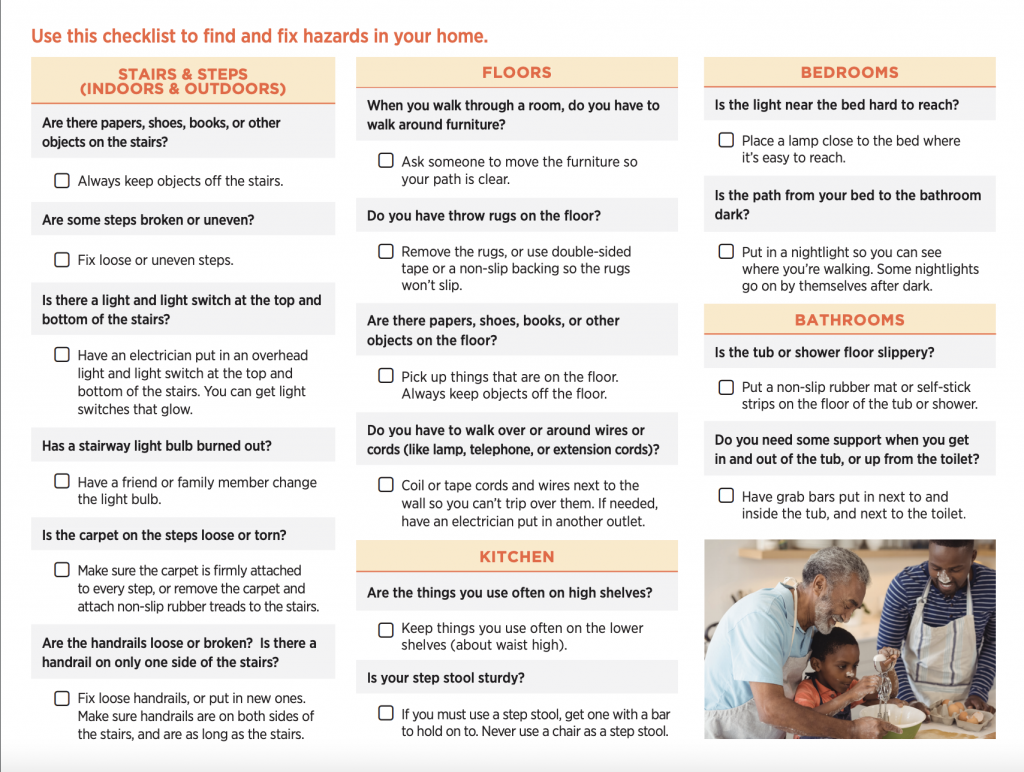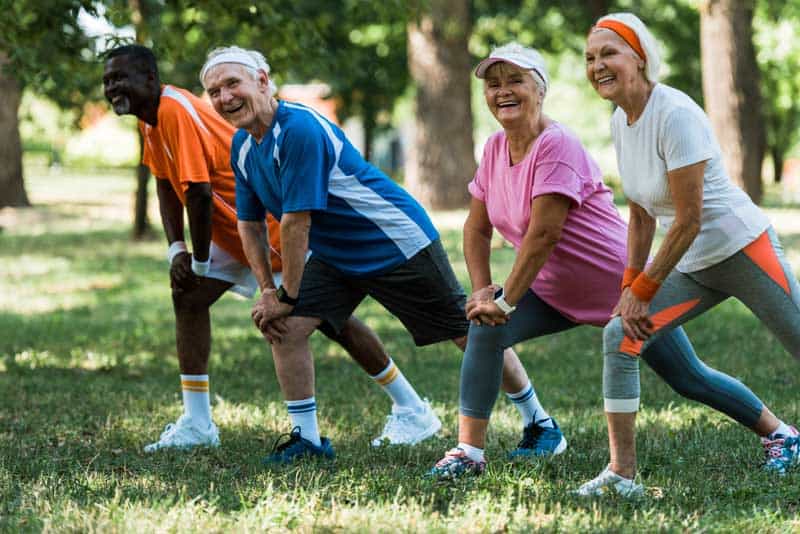You may have heard about “aging in place”, which is a movement to keep older adults living at home as long as possible. With this comes risks, fears, and worries for both family members and individuals themselves. The most common reason for hospitalizations in the older adult population are injuries due to falling. Making some minor changes to your environment and staying healthy and active will greatly decrease your chance of falling.
Let’s talk facts
- 1 in 3 adults age 65 and older fall every year
- Falling is one of the most common causes of injuries affecting older people in residential care or home setting
- Functional loss of strength and balance increases your risk for falls
You’re at risk for falling if:
- You’ve had at least one fall in the past year
- You have difficulty walking
- You have trouble seeing
- You have a health condition
- You have a fear of falling
When it comes to reducing your risk of falling at home, you may be overwhelmed and unsure of where to start. To ease this transition, The National Council on Aging identifies six basic steps to prevent future falls.
While those six ways to prevent falls are a great place to start, it’s important to understand that falling can happen when we are least expecting it, and sometimes even when we have done all the right things to prevent them. This occupational therapist demonstrates various scenarios that could potentially cause a fall within your home- and some of which you may have never even thought about!
Where am I most likely to fall in my house?
Let’s talk about one major area in your home that has the most potential for falling. Yes, it’s true… the bathroom! The best ways to alter your bathroom for increased safety are:
- Put nonslip mats in the tub or shower floor
- Install grab bars on the walls for easy transfers into and out of the shower
- Purchase (or rent!) a raised toilet seated for easier transfers on and off the toilet
- Put frequently used items at eye level on the counter so you don’t need to bend down
Here’s a video of a woman who experienced a fall and changed the way her bathroom functioned for increased safety.
Aside from bathroom safety, it’s important to realize other areas in your home that could be a fall risk. Removing things like area rugs, electrical cords, clutter, and improving the lighting can significantly reduce your risk of falling. The Center for Disease Control (CDC) has released a checklist that is incredibly beneficial and allows you to think of other situations that you might not have on your own.

What else can I do?
Make sure that you are getting regular eye and foot exams by your doctors. Proper vision enhances your ability to view your environment completely and realistically. Vision problems like double vision, poor clarity, macular degeneration, and glaucoma can affect your central or peripheral vision and the way we navigate various places.
Getting your feet checked regularly is equally as important. Making sure you have complete feeling in your feet, short toenails, and no open sores is imperative for walking, turning, and maintaining your balance within your home. Your doctor can also recommend supportive footwear to wear around your house and outside in the community.
Exercise! Engage in a physical activity program that will increase your strength, balance, and coordination. This will help you stay upright and confident when navigating different environments to ensure you are not going to fall. Exercises that you may benefit from include:
- Yoga
- Strength training
- Aerobics
- Cardiovascular exercise (i.e. walking, cycling)
- Swimming
- Pilates
- Tai Chi

Ask your healthcare provider what’s best for you!
Now what?
Make the changes! You’ve got the tools and knowledge to decrease your risk of falling and enhance your home to make it as safe as possible. Don’t be afraid to ask a family member or friend to help assist you with this process, and then rest easy knowing that you’ve done your part to reduce your risk of falling. Most importantly, know that living at home as you age without falling IS possible!
____________________________________________
References
Center for Disease Control. (2017). Check for safety a home fall prevention checklist for older adults [Brochure]. https://www.cdc.gov/steadi/pdf/STEADI-Brochure-CheckForSafety-508.pdf
Chippendale, Tracy. (2019). Feasibility of the stroll safe outdoor fall prevention program. American Journal of Occupational Therapy, 73, 1-9. https://doi.org/10.5014/ajot.2019.031294
Drive DeVilbiss Healthcare. (2014). Bathroom safety for elderly: protect a loved one before a bathroom fall occurs [Video]. https://www.youtube.com/watch?v=3kSmG2d7gS4
Gutman, S. A., Amarantos, K., Berg, J., Aponte, M., Gordilla, D., Rice, C., Smith, J., Perry, A.,Willa, T., Chen, E., Peters, R., Schluger, Z. (2018). Home safety fall and accident risk among prematurely aging, formerly homeless adults. American Journal of Occupational Therapy, 72, 1-9.
Kachhwaha, R., Sriraghunath, S., Arunkumar, Arunkumar, D., & Vyas, I. (2018). A study to analyze the efficacy of strength training exercise for fall related gait kinematics in elderly — an experimental study. Indian Journal of Physiotherapy and Occupational Therapy, 12 (4), 101-106. DOI Number: 10.5958/0973- 5674.2018.00088.6
National Council on Aging. (2015). 6 Steps to prevent a fall [Video].
The American Occupational Therapy Association. (2017). AOTA offers tips for avoiding falls [Video]. https://www.youtube.com/watch?v=jhocLIXv3lE
